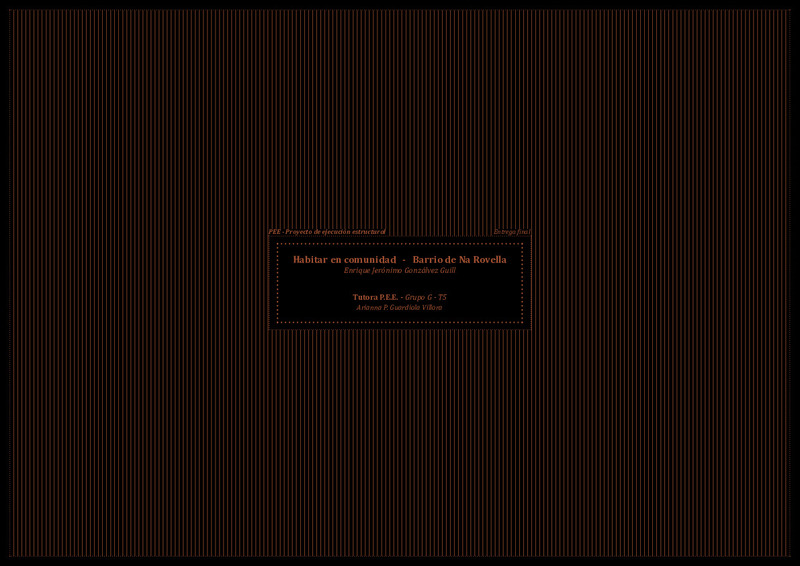JavaScript is disabled for your browser. Some features of this site may not work without it.
Buscar en RiuNet
Listar
Mi cuenta
Estadísticas
Ayuda RiuNet
Admin. UPV
Habitar en comunidad. Barrio de Na Rovella
Mostrar el registro completo del ítem
Gonzálvez Guill, EJ. (2022). Habitar en comunidad. Barrio de Na Rovella. Universitat Politècnica de València. http://hdl.handle.net/10251/190483
Por favor, use este identificador para citar o enlazar este ítem: http://hdl.handle.net/10251/190483
Ficheros en el ítem
Metadatos del ítem
| Título: | Habitar en comunidad. Barrio de Na Rovella | |||
| Otro titulo: |
|
|||
| Autor: | Gonzálvez Guill, Enrique Jerónimo | |||
| Director(es): | ||||
| Entidad UPV: |
|
|||
| Fecha acto/lectura: |
|
|||
| Resumen: |
[ES] Dentro del barrio de Na Rovella se hace evidente la falta de actividad social. Entre las causas que han dado pie a esta situación cabe mencionar especialmente la baja proporción de metros cuadrados de vivienda con ...[+]
[EN] Within the Na Rovella neighbourhood, the lack of social activity is evident. Among the causes that have given rise to this situation are the low proportion of square metres of housing in relation to the available land ...[+]
|
|||
| Palabras clave: |
|
|||
| Derechos de uso: | Reserva de todos los derechos | |||
| Editorial: |
|
|||
| Titulación: |
|
|||
| Tipo: |
|
recommendations
Este ítem aparece en la(s) siguiente(s) colección(ones)
-
ETSA - Trabajos académicos [4687]
Escuela Técnica Superior de Arquitectura








